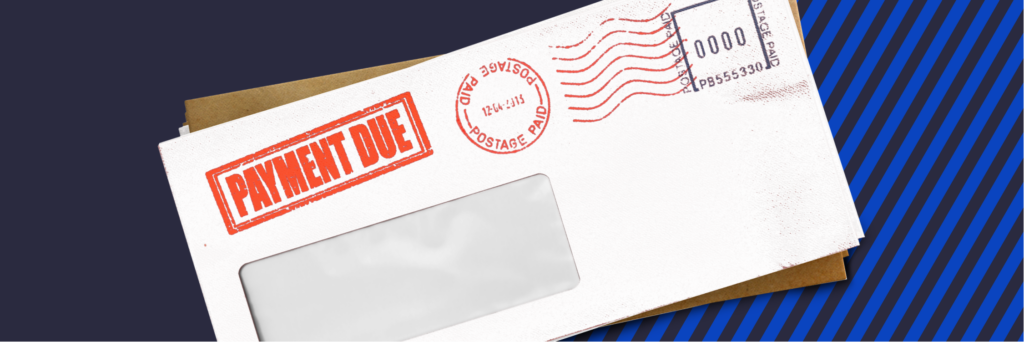You probably know that a credit card accrues interest over time if you don’t pay your full balance each month. Let’s break down what APR means and how it works when it comes to credit cards.
What does APR stand for with credit cards?
APR stands for Annual Percentage Rate, and for credit cards, APR is the standardized way to express the card’s interest rate. It refers to the yearly cost of borrowing an amount of money. With many credit cards, including the one through Avant, you’ll only be charged interest if you don’t pay off your full balance by the due date.
How does credit card interest work?
When you buy something on a credit card, you’re borrowing money to pay for it. If you don’t pay off that purchase by the next billing cycle, interest begins accruing. The APR represents the rate of interest charged on that remaining balance.
Types of credit card APRs.
There are different types of credit card APRs that are applied in specific situations. Understanding them can help you use your Avant Credit Card strategically and responsibly to avoid incurring interest charges.
Types of credit card APRs include:
- Purchase APR: This is the standard APR for purchases on your credit card. It kicks in if you have a balance that carries over to the next month.
- Introductory APR: Introductory APR is usually part of a promotional offer for new cardholders. It may refer to a low APR rate for the first several billing cycles, or it may refer to 0% APR for the first several billing cycles. Because it is an introductory rate, you’ll need to pay off your balance before the intro period ends, or your balance will be charged the card’s standard APR. The Avant Credit Card currently does not include an introductory APR.*
- Cash Advance APR: A cash advance is when you withdraw money using your credit card, such as from an ATM, or use your credit card to purchase items that can be converted to money, such as money orders. Cash advances generally begin accruing interest immediately, and they may have fees and a higher APR than the purchase APR. Some cards may charge a cash advance fee, in addition to the Cash Advance APR, for the use of this feature.
- Balance Transfer APR: This APR takes effect when you transfer a debt (such as a small loan or separate credit card balance) to your credit card. Interest begins accruing on the date of the debt transfer, and other fees may be charged. It may be higher than the purchase APR. The Avant Credit Card does not currently allow for balance transfers.
- Penalty APR: A penalty APR may be applied to your account if you’re late on payments, such as two months behind. It’s a higher APR than the purchase APR, and it doesn’t include any late fees that may also be charged to your account. If you make on-time payments for several months, the penalty APR often reverts back to the standard purchase APR. The Avant Credit Card does not charge penalty APRs.*
How is APR calculated?
APRs for credit cards can be either static (i.e., the APR does not change over time) or it may vary based on certain external factors, such as the current Prime Rate. Variable APRs are typically expressed as a combination of a variable index rate (usually the U.S. Prime Rate) and a marginal rate, which is set by the card issuer. For instance, if the U.S. Prime Rate is 3.25% and the marginal rate is 21.74%, then your APR is 24.99%. The variable rate can change periodically, which means your APR can, too.
Avant uses your average daily balance (ADB), daily periodic rate (DPR), and the number of days in the billing cycle (DBC) to calculate interest (I).
The formula, which is also used by traditional credit card issuers, looks like this:
ADB x DPR x DBC = I
To calculate your interest, divide your APR by 365 to find your daily periodic rate. Then, calculate your average daily balance by adding each day’s balance together and dividing it by the number of days in the billing cycle.
Once you’ve got the average daily balance and daily periodic rate figured out, plug the information into the equation. If you have an average daily balance of $1,500 with a daily periodic rate of .0685% for a 28-day billing cycle, the calculation to understand how much interest you will pay for the billing cycle looks like this:
$1,500 x .0685% x 28 = $28.77
Remember that your account could have different APRs for different transactions, such as cash advances. Each transaction category with its own APR will be calculated separately, then added together to get your total interest owed. Check your statement to see which transaction types and APRs are active on your account.
Find out what 0% APR really means for credit cards here.
The calculation is based on the Average Daily Balance method used for most credit cards. If you are unsure if your products use an Average Daily Balance calculation or unsure as to the accuracy of your calculation, review your cardmember agreement and consult a professional to calculate and determine your finance charges.
What is a good APR for a credit card?
There isn’t necessarily a ‘good’ APR for credit cards, but the Federal Reserve does provide statistics on the national average credit card interest rate, which can help you gauge different offers. Bear in mind that this statistic accounts for all credit card types available, and the APR you’re eligible for is influenced by your creditworthiness. The better your credit, the better your chance of qualifying for a credit card with a low APR, which means paying less in credit card interest.
If you want to improve your credit, the following tips may help:
- Ensure your credit report is accurate: If your credit report has incorrect information on it, it could be impacting your score. Your first step should be requesting a copy of your credit report and verifying that all the information on there is true. You can go online to annualcreditreport.com to request one free copy of your credit report every 12 months from each of the three nationwide credit reporting companies. If you see an item you disagree with – such as a loan you didn’t take out – go through the process of disputing it. Getting false items removed from your report may help your score.
- Pay down existing balances: One main factor that impacts your credit score is how much of your available credit is being used, called credit utilization. A lower level of utilization may help establish you as financially responsible with a reliable credit history.
- Resolve accounts in collections: If you have a valid account in collections, this will negatively impact your score and send up a red flag to lenders. Work with the collection agency to pay off the account or set up a payment plan. The item will still show on your report, but lenders will see you as less of a risk and newer credit-scoring systems may ignore it when calculating your score, improving it.
- Avoid opening or closing accounts: Closing accounts, like canceling a credit card, will reduce your available credit, increasing your credit utilization. Keep lines of credit open instead, using them for small purchases and paying them off in full.
Opening new accounts will lower your average account age, which negatively impacts your score. Opening multiple new accounts may also signal to lenders that you’re in a perilous financial situation, making them hesitant to approve you.
Learn more about the Avant Credit Card.
Understanding credit card APR, its types, and how interest is calculated can help you stay on top of your finances. With the Avant Credit Card, you can enjoy perks like a fast and easy application process and zero deposits required. Even if you have fair credit, there are credit card options offered through Avant that can work for you.
*For more information, click here to see the rates and terms associated with the AvantCard.




